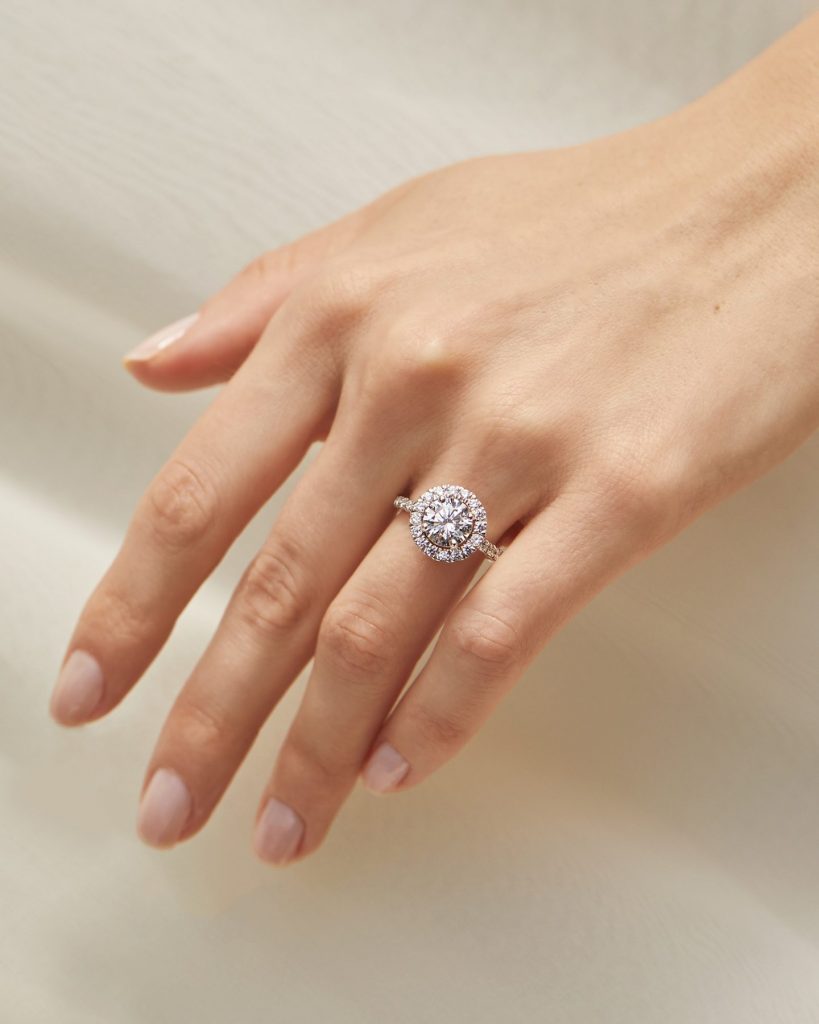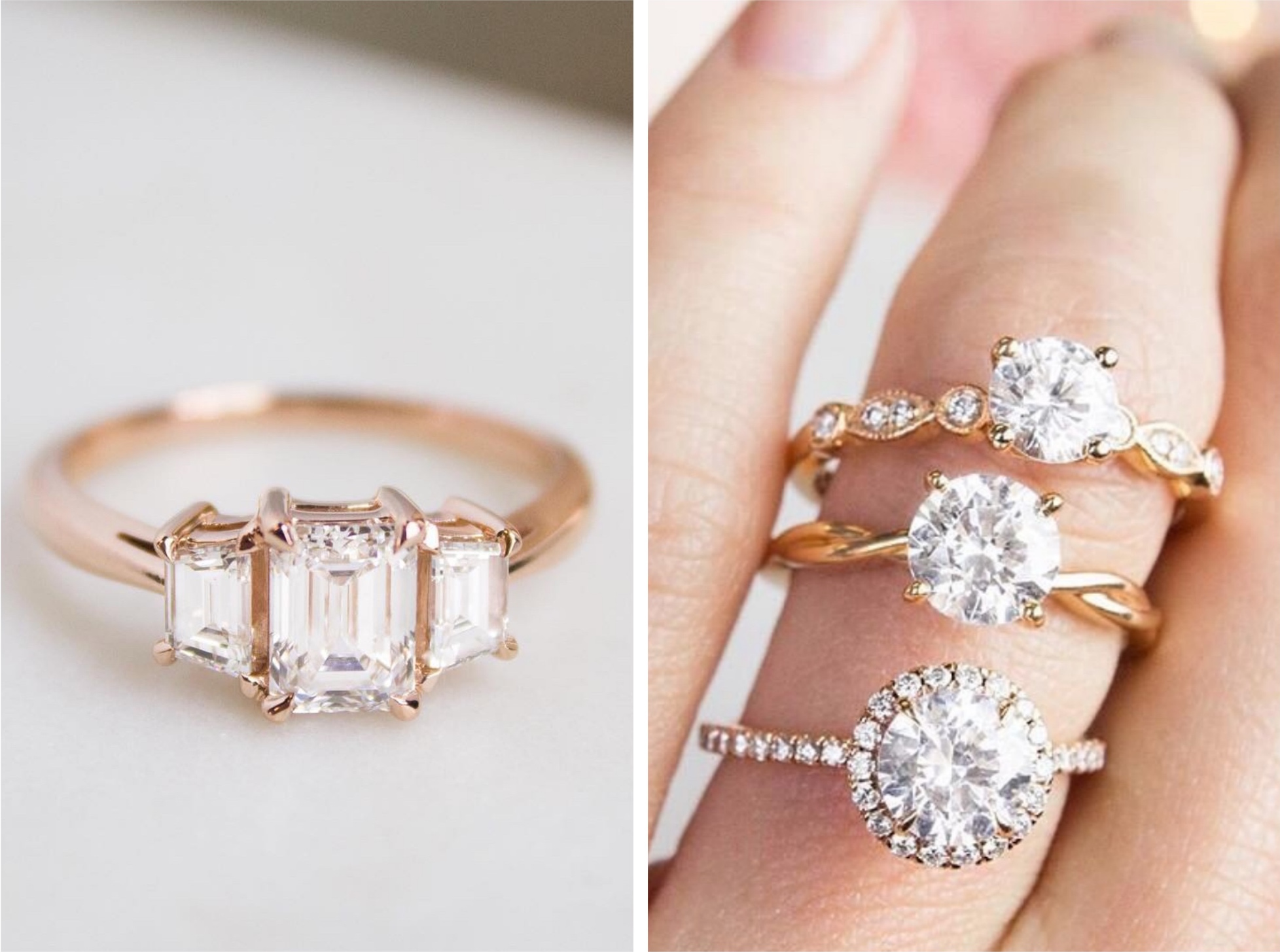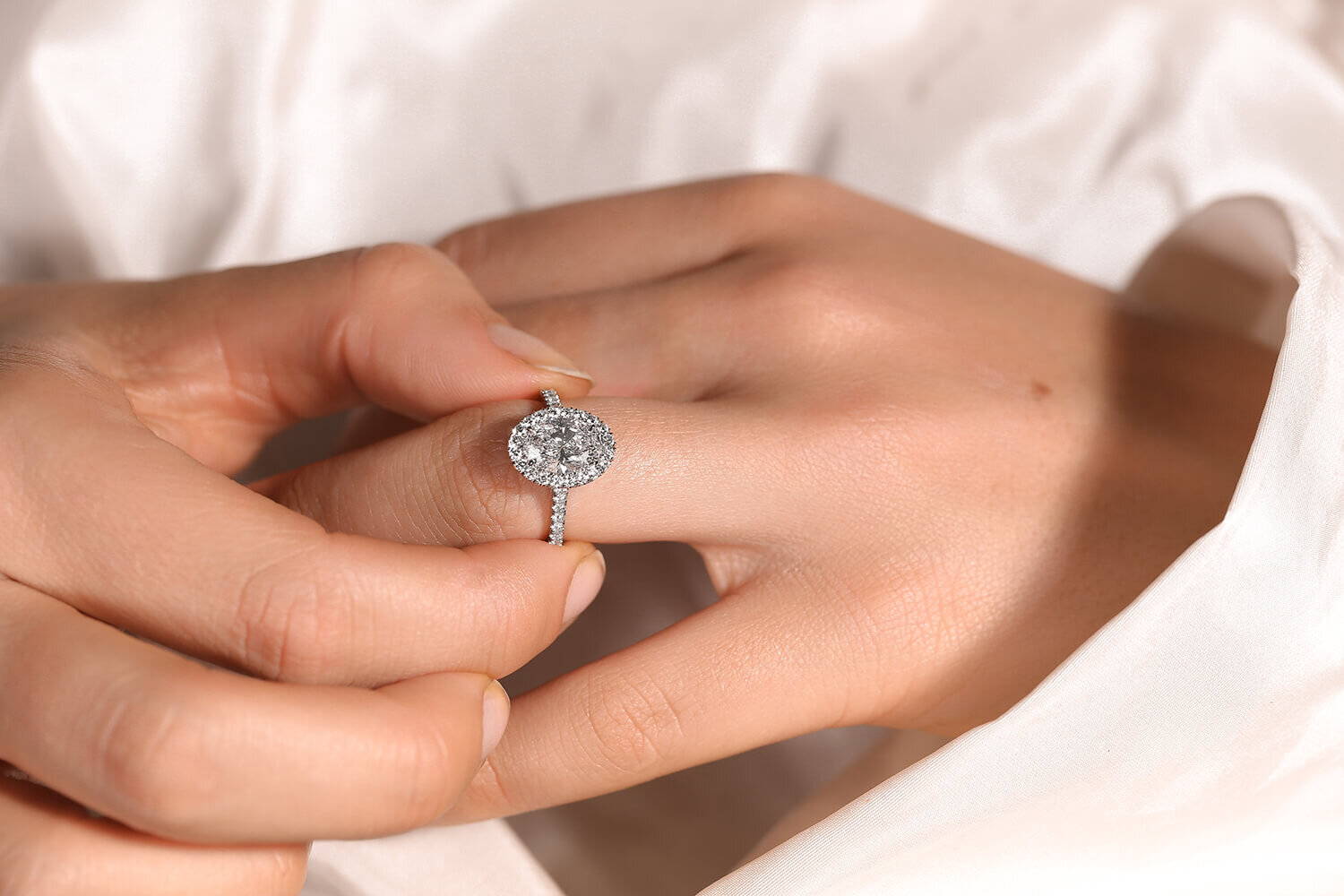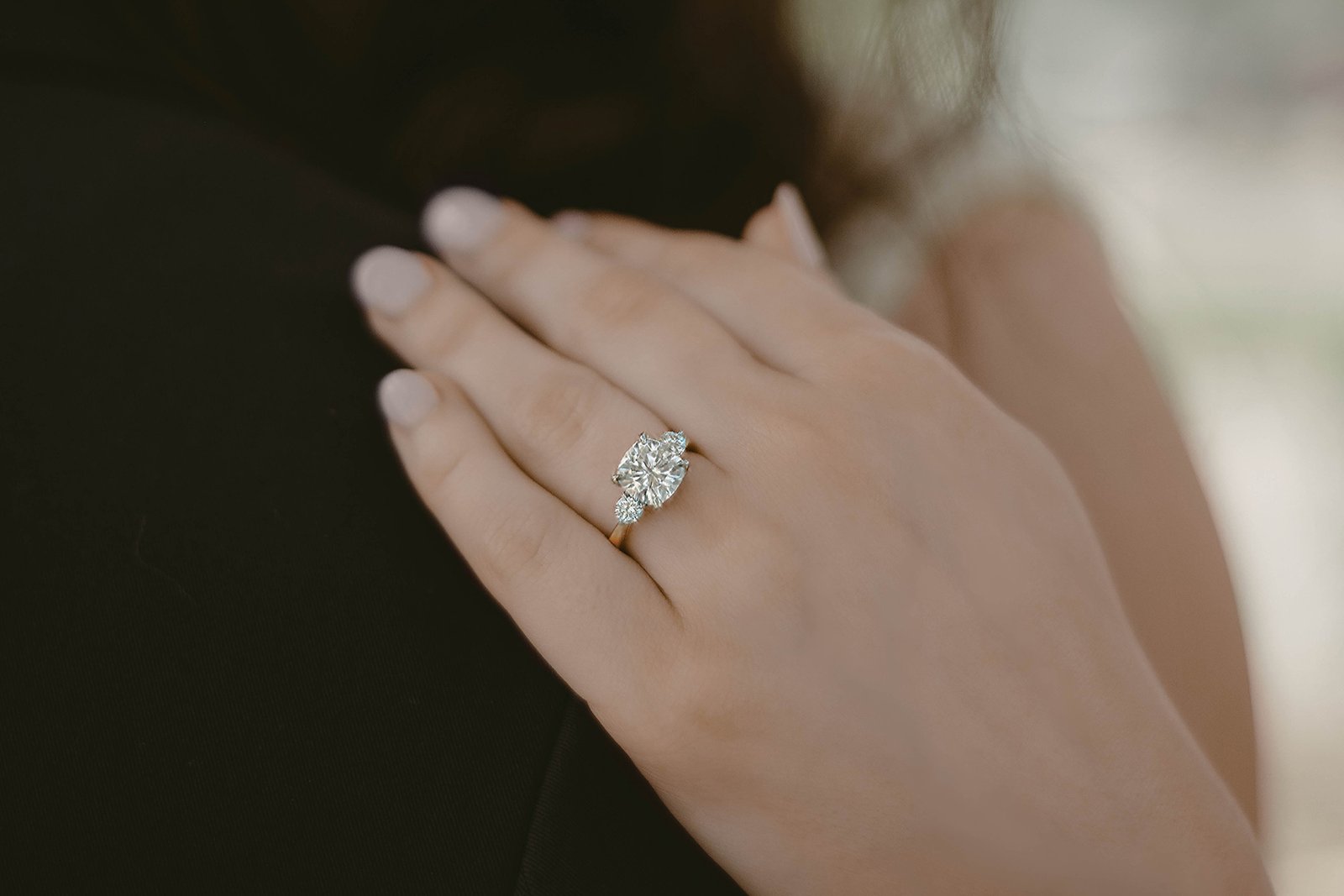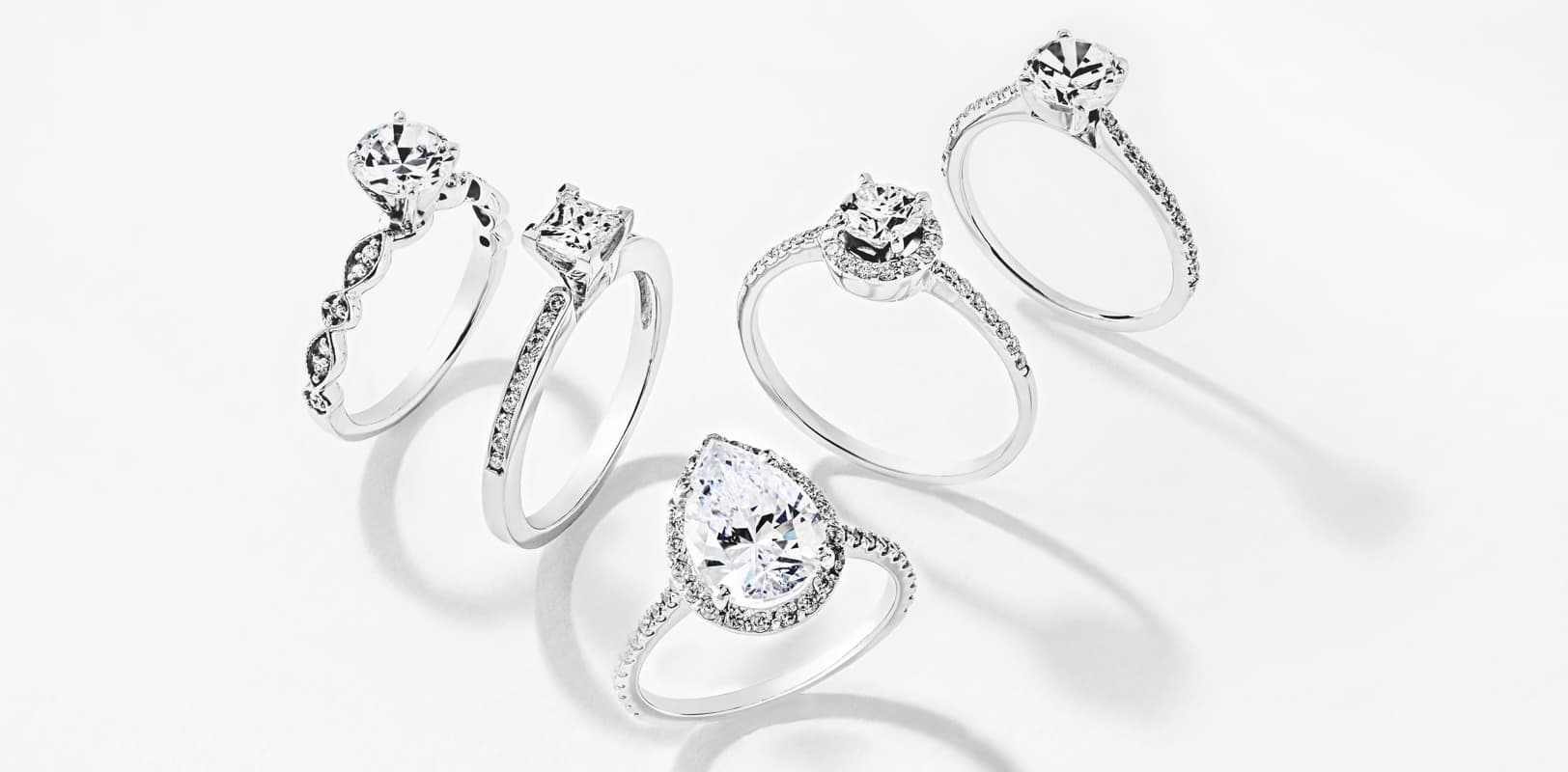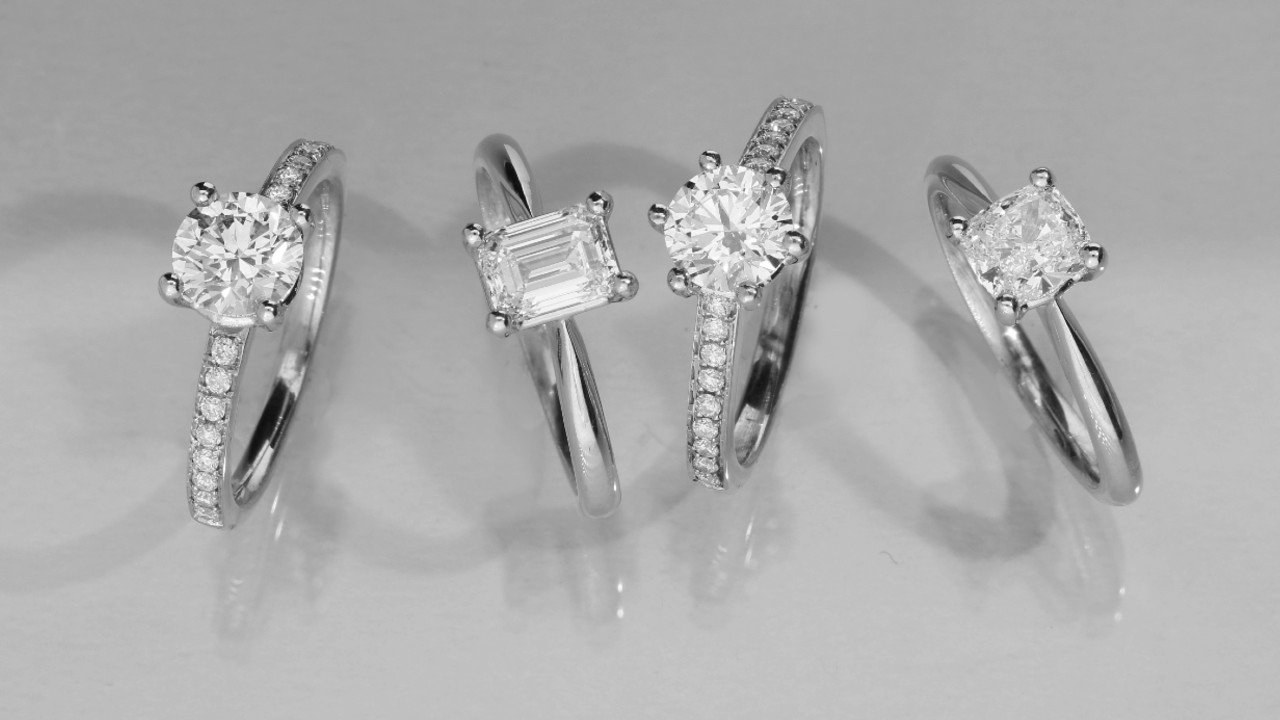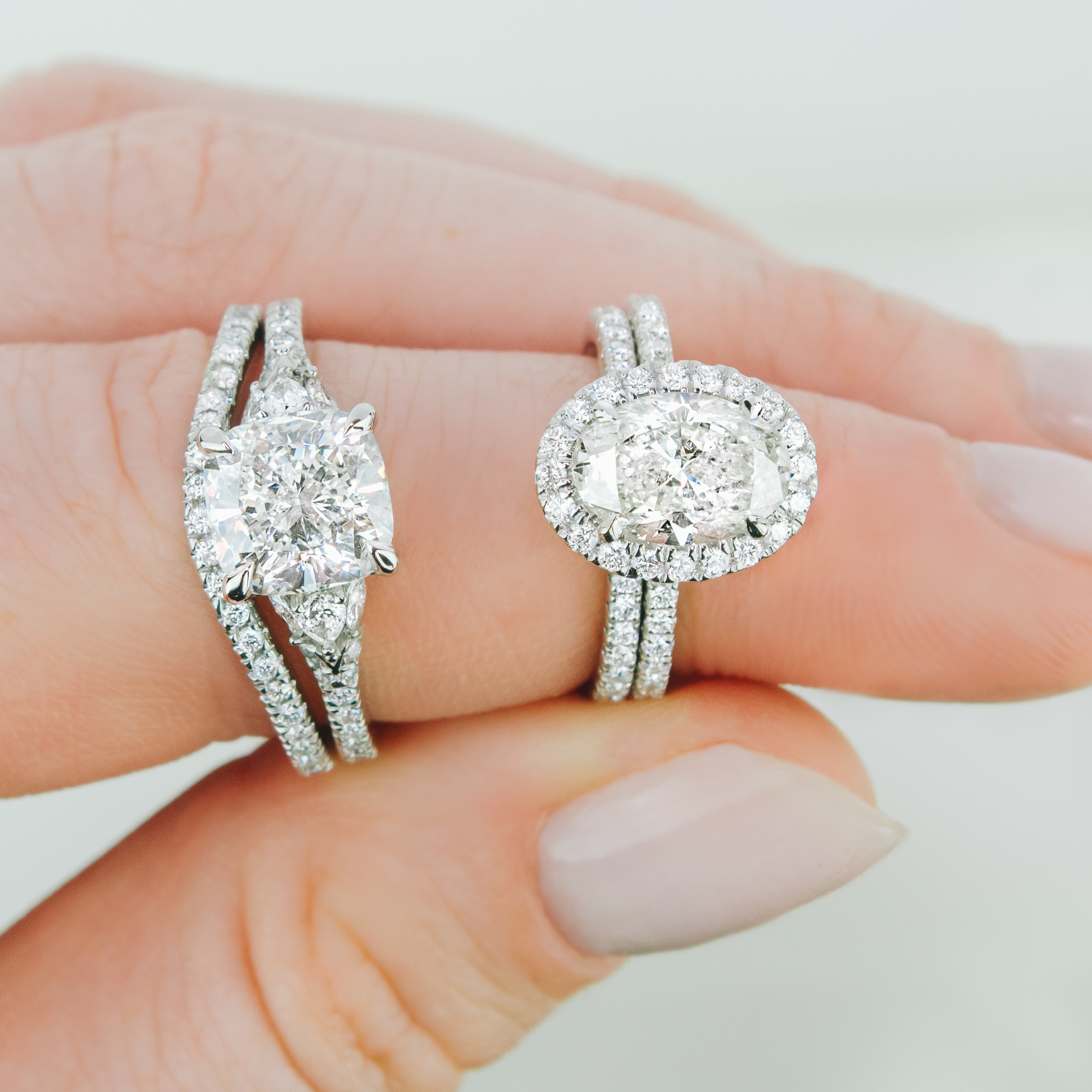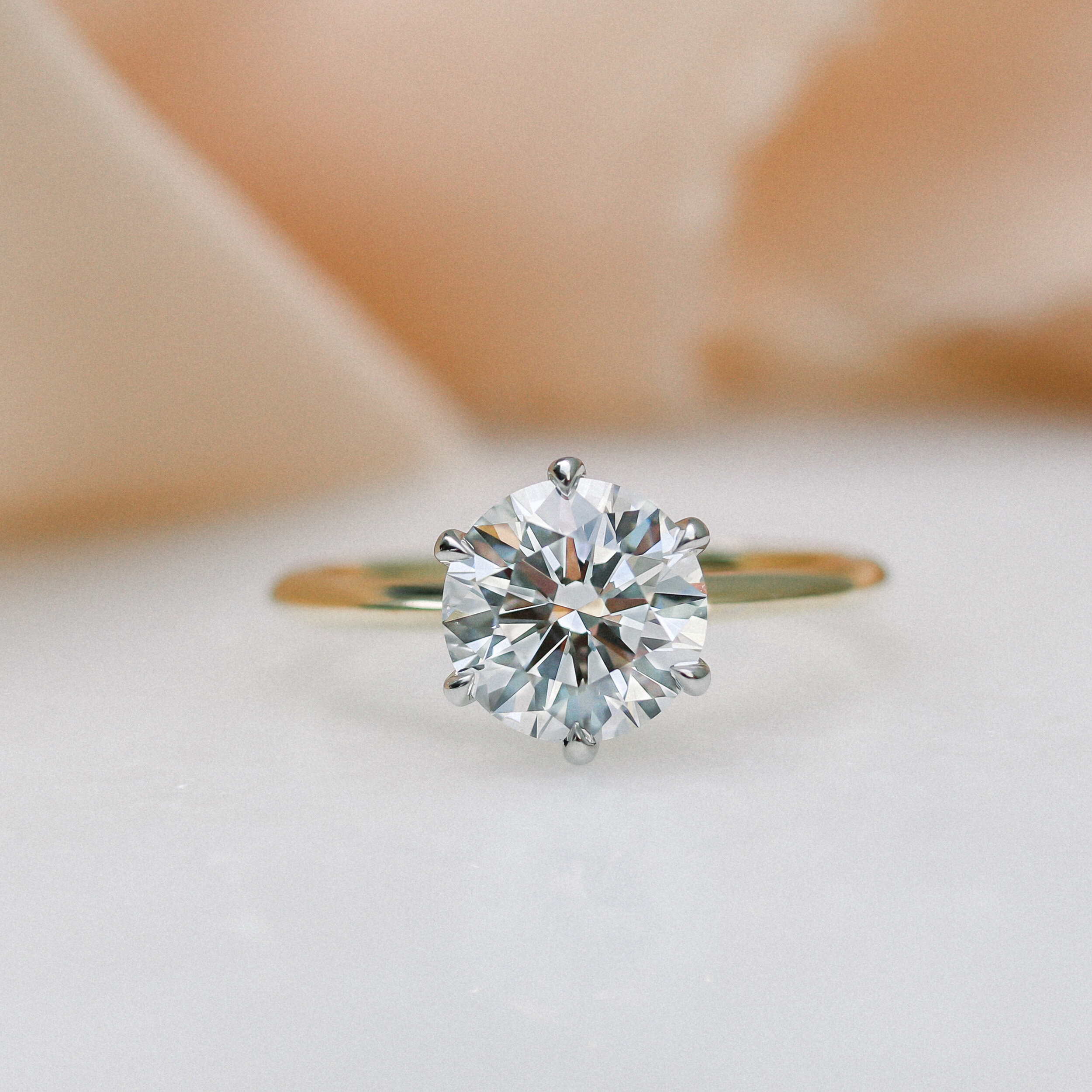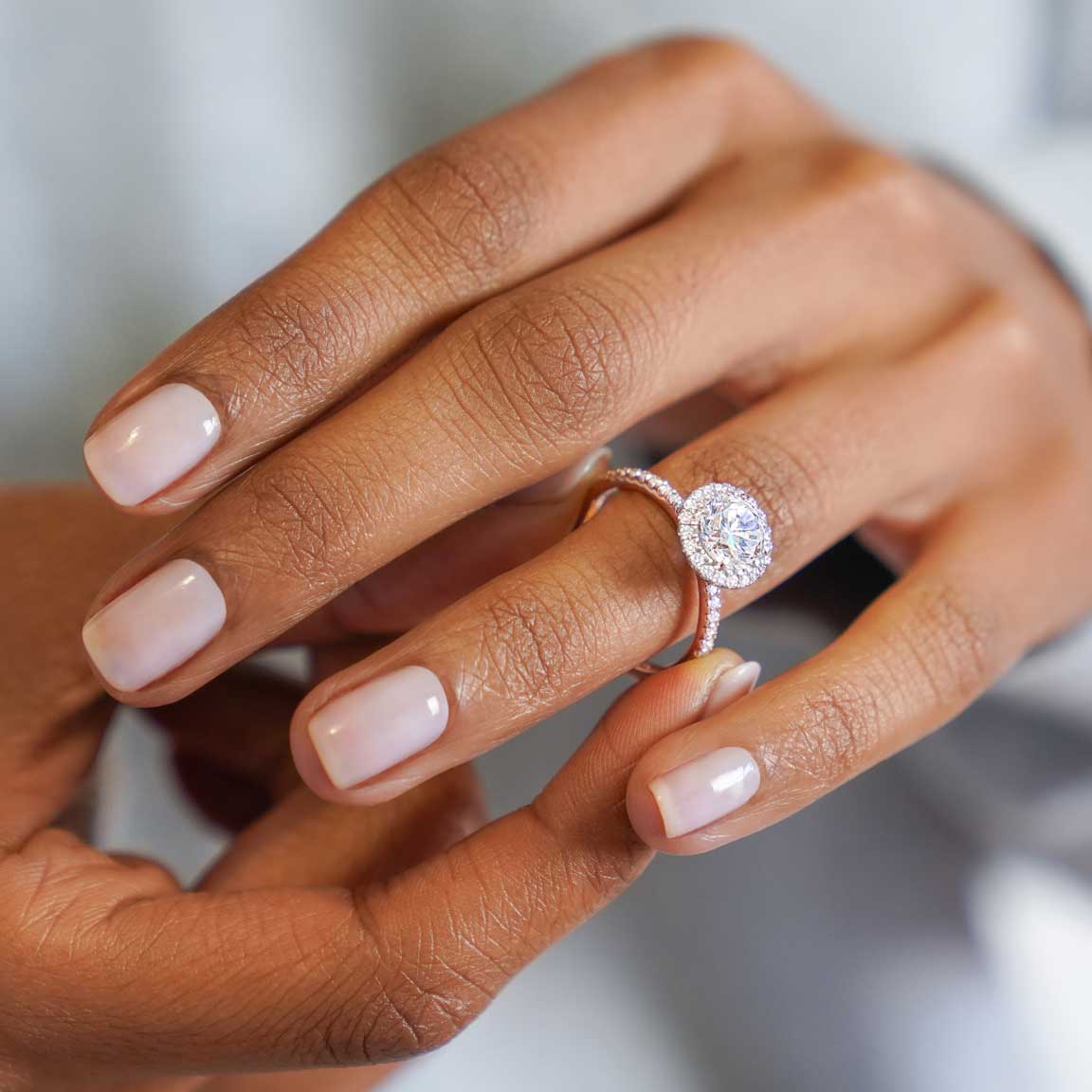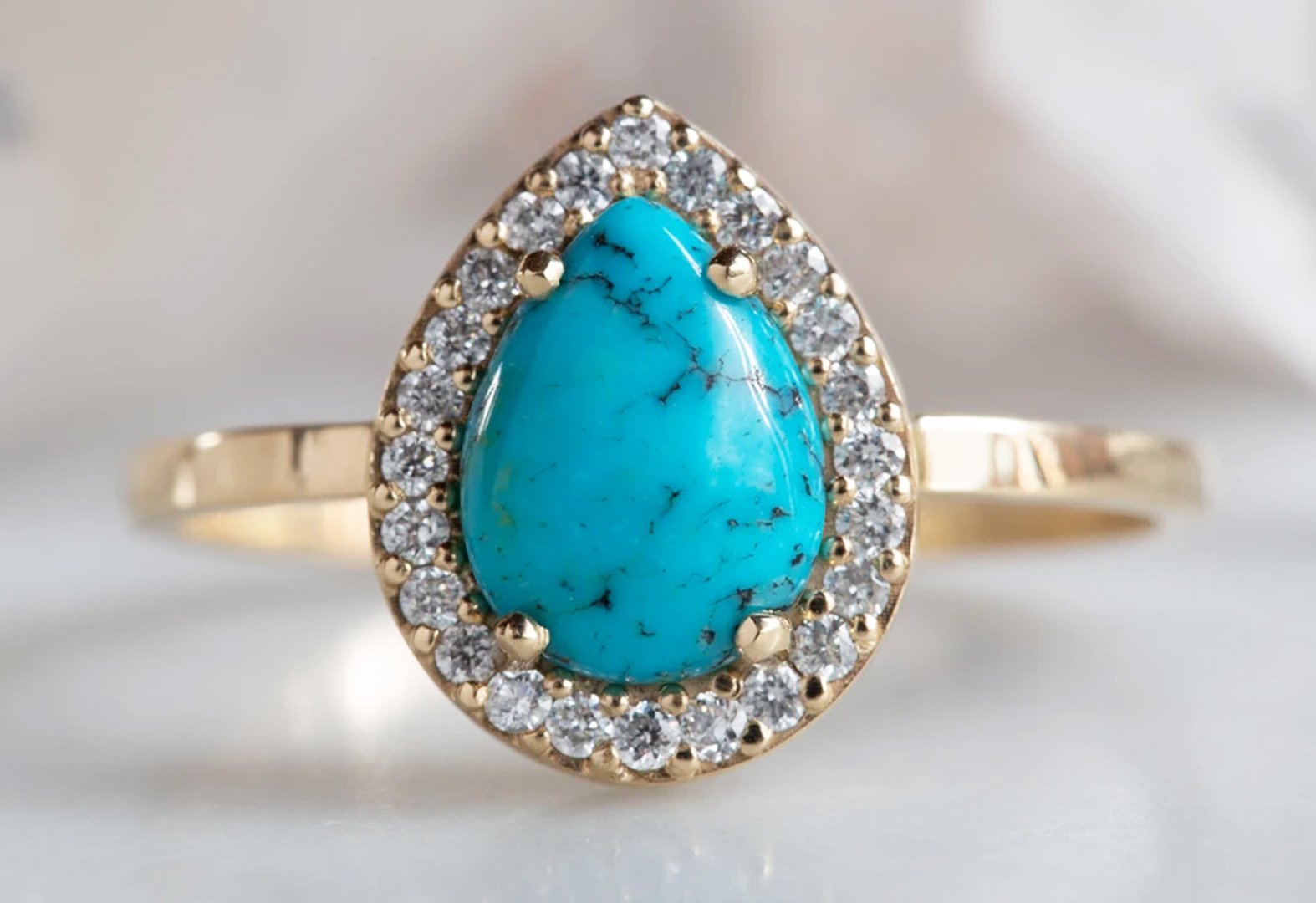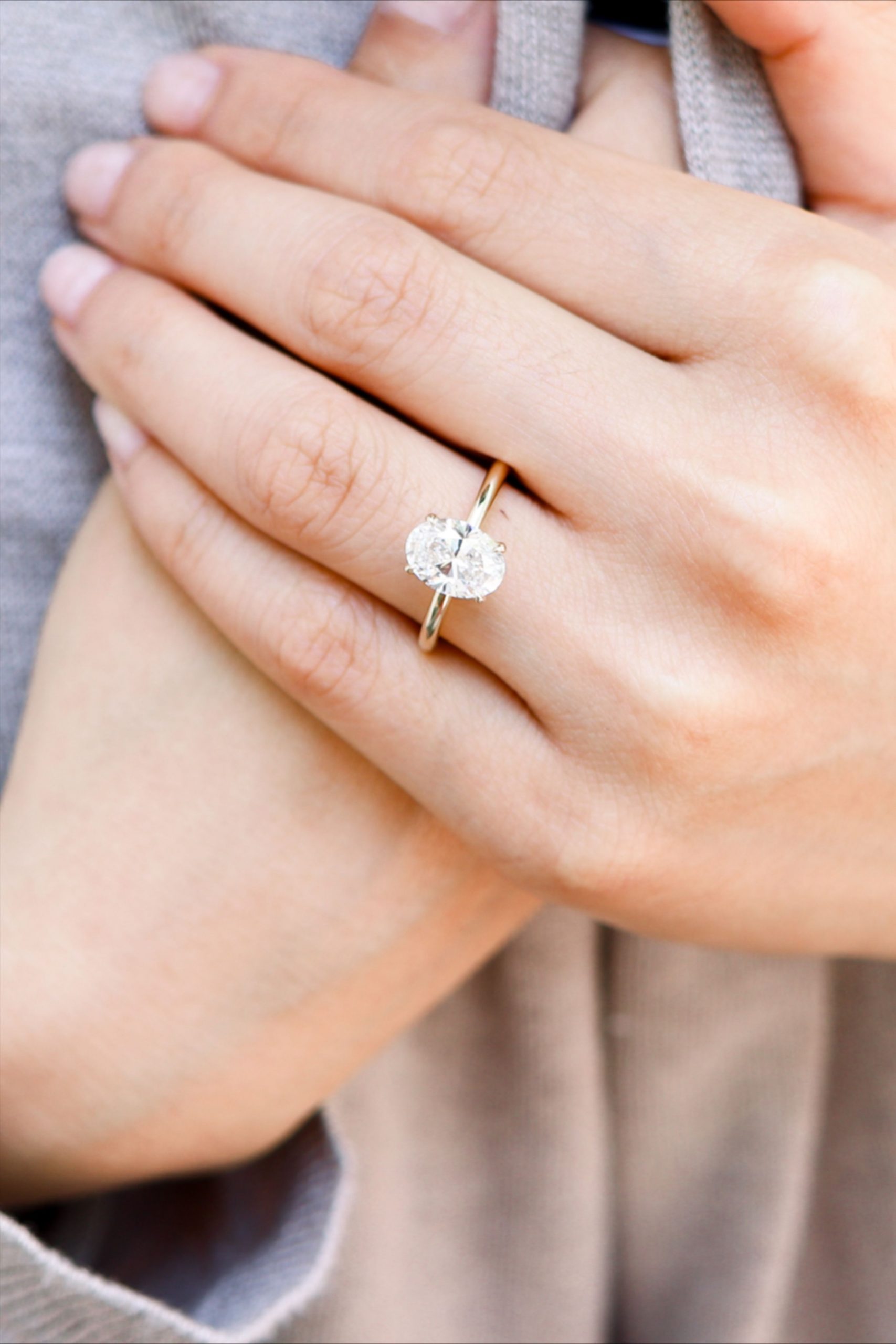A. Lab-grown Diamond Engagement Rings
Lab-grown diamonds offer customers an excellent opportunity to get a bigger diamond for a lower price. Below, we’ve provided the facts about lab-grown diamonds and their industry to help you find the best diamond option for you.
1. What are laboratory-grown diamonds?
Laboratory grown diamond engagement rings are fast becoming a trend in the diamond market, with consumer interest in sustainability growing and the desire for bigger, more impactful stones. Laboratory-grown or artificial diamonds are made in laboratories using a variety of techniques. Typically, a “diamond seed”, a very small part of a diamond, is used to grow a laboratory-made diamond. These labs replicate the high pressure and temperature in the Earth’s mantle, where naturally mined diamonds are formed, or use superheated gas to cultivate the diamond. They are often referred to with terms such as cultured diamond, engineered diamond, artificial diamond, or synthetic diamond.
2. Are lab-grown diamonds real diamonds?
Sometimes an mined diamond is referred to as a “natural diamond” or “real diamond”, which is incorrect because laboratory-grown diamonds have a diamond crystal structure identical to that of an mined diamond – both should be considered natural diamonds. real. Synthetic or cultured diamonds should also not be confused with diamond simulants such as moissanite or cubic zirconia. A synthetic diamond has an identical crystal structure and aesthetics to an earth-grown diamond, while simulants are gemstones that are not chemically identical to an earth-grown diamond and give a similar appearance, but should be categorized as diamond alternatives.
3. Where should I buy my lab-grown diamond?
We continually develop relationships with laboratory-grown diamond manufacturers and suppliers who share our values and business practices. We currently offer laboratory-grown diamonds through these suppliers to customers who wish to purchase an artificial diamond engagement ring, and we manufacture these diamonds in the United States and India.
4. Laboratory grown diamonds
We have a database of thousands of lab-grown diamonds to choose from – contact us and we’ll help you find the perfect diamond. Ground-grown mining diamonds and laboratory-grown diamonds have their advantages and disadvantages. We believe that the best way to approach this topic is through research and full transparency so that you can make the right decision, armed with adequate knowledge of both.
5. Should I choose a lab-grown diamond or a land-grown diamond?
Perhaps the biggest advantage of a lab-grown diamond, as mentioned above, is that it’s more affordable – typically 30-40% cheaper than its earth-grown equivalents. This will increase your budget and give customers the option of getting a bigger diamond for a lower price. Future predictions in the diamond industry assume that lab-grown diamonds will one day cost just 10% of the Earth’s natural diamonds, while still recreating their inherent structure and aesthetics.
They don’t cost that now, and a lab-made diamond may not be valued in the same way as a diamond quarried from the earth. We mention this because it’s important to understand that a lab-grown diamond can give you access to a larger diamond at a lower cost, but we recommend that you don’t consider lab-grown diamond valuable in the mined area. While the price is better, it’s also important to note that the choice of lab-grown diamonds is more limited. As a relatively new process, synthetic diamonds are not as readily available as mined diamonds, which means you have fewer options to choose from. Lab-grown diamonds are a really wonderful way to add a little more to your budget, and the industry works to reduce the environmental impact of large-scale mining.
6. What to look for when buying a lab-grown diamond
Before making a purchase, consumers should be aware of some important aspects of laboratory-grown artificial diamonds that not all retailers discuss as openly as in this article:
- In many cases, synthetic stones are represented as mined, which makes a big profit for these companies because they sell them at the cost of a mined diamond, but pay only the small cost of manufacturing the artificial stone, made in the laboratory. It is important for companies to be honest.
- Are lab-grown diamonds certified? As consumers, we must expect and demand from the jewelers and suppliers we buy that a produced diamond has the same certification standards as a mined stone. These certificates communicate the quality of the diamond – such as color, clarity, carat weight. It should also indicate that the diamond is laboratory-grown and not mined. This will allow consumers to make informed quality comparisons between a mined diamond and a lab-made diamond.
- Like a mined diamond, a laboratory diamond is made of carbon, but like flat plywood furniture, something made in a laboratory or factory does not have as much emotional and financial value as its rare and traditional related and disassembled equivalents. Although made of the same material, an artificial diamond does not have the same level of romance as a diamond that formed in the heart of the earth over millions of years.
7. Isn’t the diamond mining industry hurting communities?
Negative media rarely mention this, but in most countries that make up the supply chain, earth’s diamonds are actually a source of good. Take a look at our Ethical Engagement Rings page to learn more about how the diamond mining industry supports countless communities that depend on commerce for a living.
8. Are lab-grown diamonds more ethical?
Diamonds mined from the ground certainly have a negative impact on local ecosystems, which the industry is consciously trying to reduce through the introduction of responsible mining initiatives. Although the laboratory-grown diamond industry reduces the environmental impact of large-scale mining, it requires an immense amount of energy. This means that laboratories that grow diamonds need to offset their carbon footprint through other methods, such as renewable energy, to be truly sustainable.
In conclusion, laboratory-made diamonds are an excellent alternative to their mined counterparts, offering identical aesthetics and inherent structure. Both earth-mined diamonds and laboratory-grown diamonds have confusing narratives and we believe it is best for the client to be aware of the misunderstandings between the two to make an informed decision. As always, it’s up to you to find the best option for your jewelry.
B. Lab Grown Diamonds
1. What is a laboratory-made diamond?
Laboratory-grown diamonds, often referred to as cultured diamonds, man-made diamonds or even synthetic diamonds, are made in a laboratory environment that mimics the natural process of a diamond’s growth – taking much less time (say, 3 billion years less , give or take). Visually, chemically and physically identical to mined natural diamonds, the demand for laboratory-grown diamonds has increased in recent years as technical methods and technologies have been perfected to produce diamonds that are beautiful, economical and true in every way.
Lab-grown diamonds are a great way to ensure you’re buying a bigger diamond for a lower price. Would you like to compare natural and lab-grown diamonds at the store? Make an appointment with our expert gemologists to see a selection of diamonds for your specific budget. You didn’t read that wrong, lab-grown diamonds are real diamonds. To understand how and why, our gemology experts walk you through a detailed guide to how lab-made diamonds are cultivated, how they differ and not from natural diamonds and diamond alternatives, and discuss the complexities of classification, certification, and the cost of artificial diamonds. You will receive an experience to help you decide if a lab-grown diamond ring is the best choice for you.
2. How are lab-grown diamonds made?
We all know that natural diamonds are a miracle of nature, but how are diamonds made? Understanding the natural diamond manufacturing process is critical to learning more about how synthetic diamonds are made. So let’s start with creating natural diamonds: about 90 to 250 miles deep in the Earth’s mantle, pure carbon particles are exposed to intense heat and pressure, which encourages crystallization that builds up over time. Diamonds are transported to the Earth’s surface through volcanic explosions.
During HPHT, graphite (pure carbon) is exposed to intense heat and pressure through extreme electrical impulses and pressed between pieces of metal until the carbon melts and a diamond is formed – this usually takes several days. In CVD, a tiny piece of existing diamond (usually made by HPHT) is treated with a heated carbon-rich gas that reaches high temperatures. Carbon gases ionize and eventually particles adhere to the original diamond and cause crystallization. Typically, CVD produces the best diamonds because the metal involved in HPHT can penetrate the diamond and create visible inclusions.
3. Are lab-grown diamonds more ethical?
Without a doubt, lab-grown diamonds are a surefire way to ensure that your diamond has been ethically produced and acquired – in short, lab-grown diamonds are more ethical than mined diamonds. Ethical diamonds are more in demand than ever as consumers, NGOs and organizations like the UN are calling for an end to the conflict diamond trade. Global efforts, including the United Nations Kimberley Process, continue to work to eradicate extracted blood diamonds from world markets and have impeded 99.8% of the global trade in blood diamonds. So while a diamond mined on the UK market is almost certainly conflict-free, choosing a lab-grown diamond guarantees 100% transparency about its ethical origin.
Compared to land used for mining, laboratory-grown diamonds are a less disruptive and more sustainable option than mined diamonds. However, laboratory-made diamonds require a lot of energy to grow – typically between 250kWh and 750kWh. That number will likely decrease with improved technologies, and some manufacturers already claim that their lab diamonds only need 20kWh to grow. In your search for ethical diamonds, whether lab-made or mined, it is important to know that you are buying from a reputable jeweler. Queensmith prides itself on ensuring that we only work with the most trusted, reliable and transparent diamond suppliers and provide only GIA and IGI certified diamonds for our laboratory mined and cultured diamond rings.
4. Why are artificial diamonds called “synthetic diamonds”?
Although the terminology may seem a little confusing, “synthetic diamonds” are real diamonds. The term “synthetic diamond” refers to the artificially created environment in which a laboratory-grown diamond is created.
Synthetic diamonds are not to be confused with diamond simulants. Diamond simulators are not diamonds, but stones that are somewhat similar in appearance and are often used for cheaper jewelry such as cubic zirconia and moissanite. Our gemological advice is to stay away from diamond simulators: they retain no value and, more importantly, are less noticeable in their appearance, especially in their shine, luster and crisp texture.
